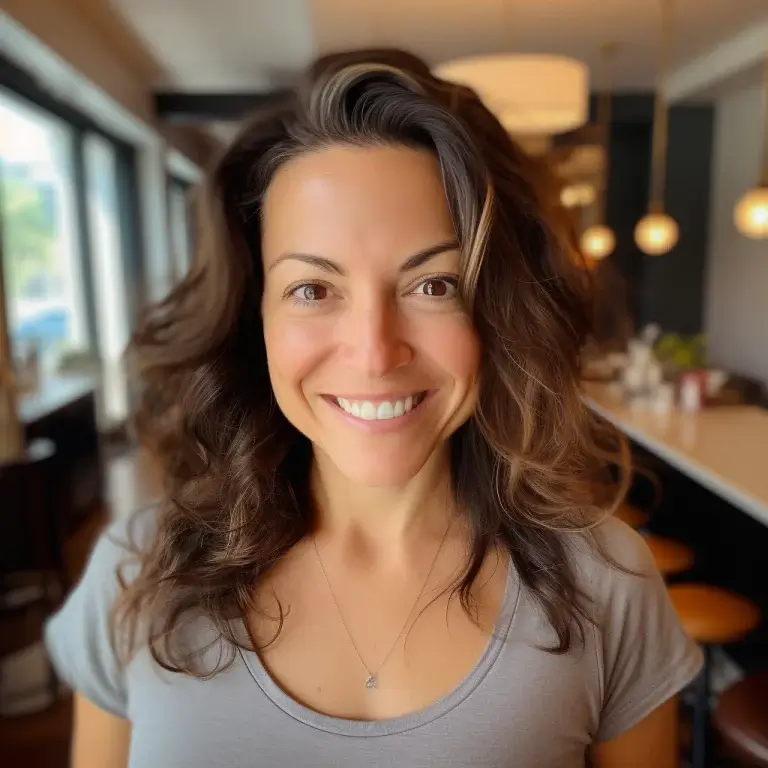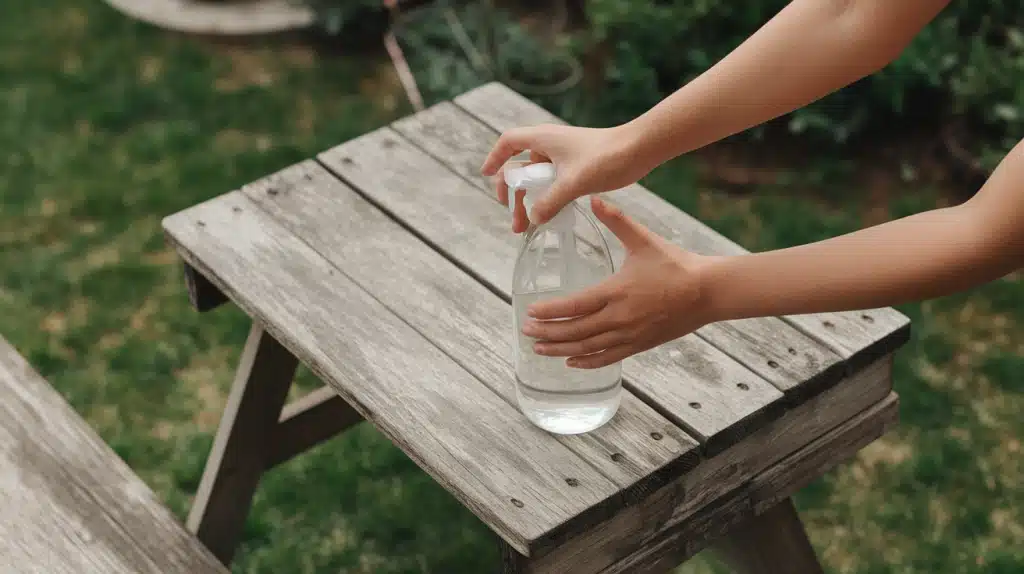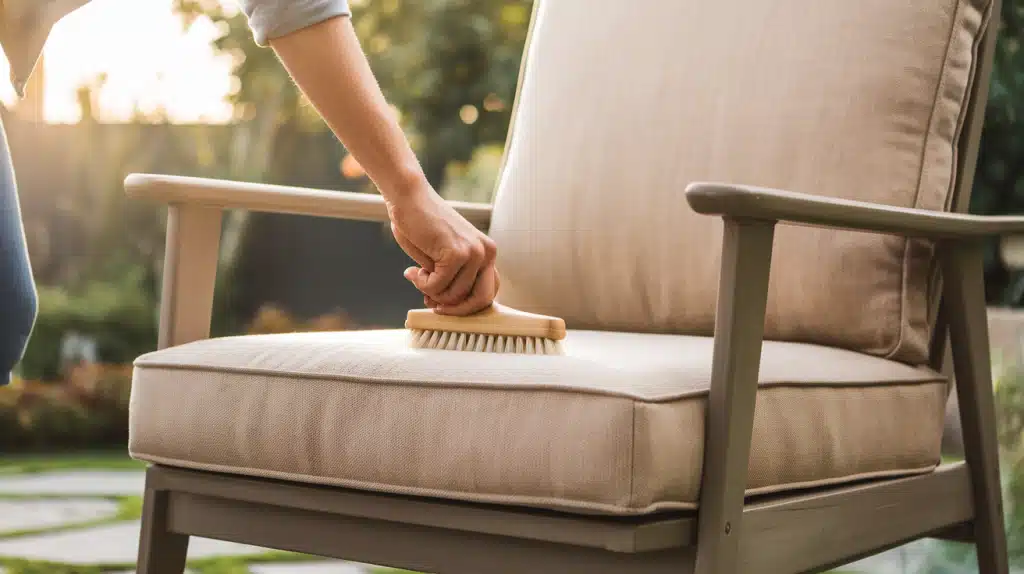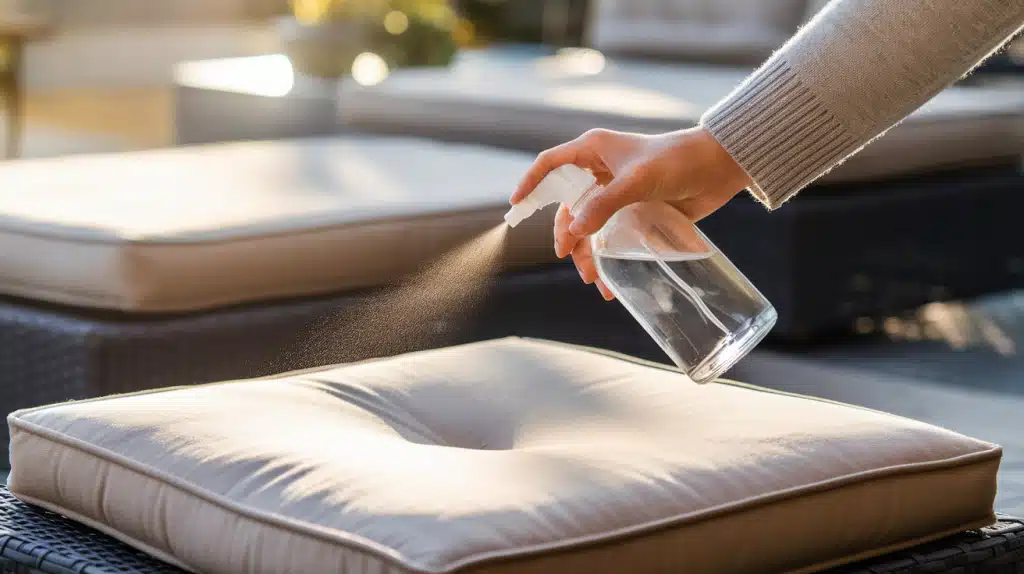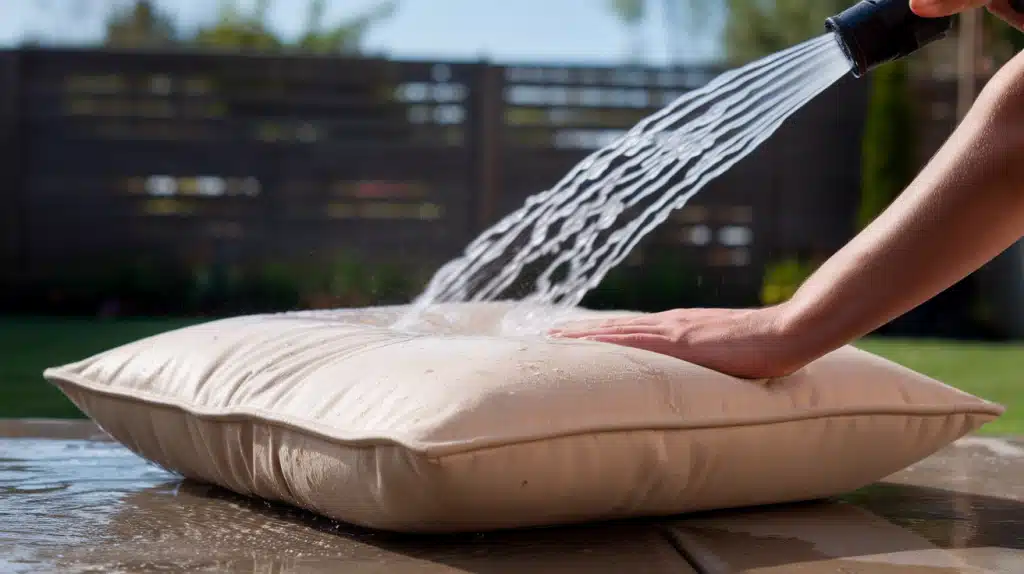Looking at mildew-stained outdoor cushions and thinking bleach is the only solution?
Those black and green spots make anyone want to reach for the strongest cleaner possible. However, what most people don’t realize is that bleach actually damages cushions more than it helps, weakening the fabric fibers and creating permanent discoloration that appears worse than the original stains.
There’s a better way that works. Simple household items, such as white vinegar and dish soap, remove mildew just as effectively as harsh chemicals, without damaging cushions in the process.
This guide shows exactly how to clean mildew from outdoor cushions using safe, natural ingredients that won’t damage the fabric or harm family members.
Learn step-by-step techniques that work, along with alternative cleaning solutions for stubborn stains that have been lingering for months.
Why Avoid Using Bleach on Outdoor Cushions?
Many people reach for bleach when they see mildew stains on their outdoor cushions. This may seem like a quick fix, but bleach can cause more harm than good.
1. Fabric Damage Issues
- Bleach breaks down the structure of fabric fibers over time. The cushions may appear clean initially, but they can become weak and prone to tearing over time. The chemical reaction destroys the bonds that hold fabric together.
- Regular use of bleach significantly shortens the lifespan of outdoor cushions. What should last several seasons may need replacement after just one summer. The fabric becomes thin and fragile with repeated exposure.
2. Discoloration Problems
- Bleach doesn’t always work evenly across fabric surfaces. You might end up with patchy, spotted cushions that look worse than the original mildew stains. Some areas may turn completely white while others remain unchanged.
- Unlike natural cleaners, bleach damage cannot be reversed. Once your cushions lose their color, there’s no way to restore the original appearance. You’re left with permanently damaged furniture that looks unprofessional.
3. Environmental Concerns
- While rinsing bleach from cushions, it flows into storm drains and water systems, potentially contaminating them. This chemical runoff can harm aquatic life and disrupt natural water ecosystems. Plants in your yard can also be affected by exposure to bleach.
- Bleach releases chlorine gas, especially when mixed with other cleaning products, accidentally. This can cause respiratory irritation and create an unsafe outdoor environment for your family and pets.
4. Health and Safety Risks
- Direct contact with bleach can cause chemical burns on the skin and severe eye damage. Working with bleach outdoors means you’re exposed to wind that can blow the chemical toward your face and body.
- Bleach vapors can cause breathing problems, especially for people with asthma or allergies. The confined space around outdoor furniture can concentrate these fumes, making the area unsafe during cleaning.
Step-by-Step Guide to Remove Mildew from Outdoor Cushions
Follow this simple 5-step natural cleaning method to safely remove mildew from outdoor cushions, without using bleach or causing damage, for fresh results.
| Category | Item | Purpose |
|---|---|---|
| Tools Required | Soft Bristled Brush | Removes loose dirt and gently scrubs mildew stains without damaging fabric. |
| Spray Bottle | Evenly distributes cleaning solution across stained areas with controlled application. | |
| Garden Hose | Rinses away all cleaning solutions and completely loosens mildew. | |
| Materials Required | White Vinegar | Kills mildew spores and breaks down stains naturally. |
| Dish Soap | Lifts dirt and mildew from fabric fibers for easier removal. | |
| Water | Dilute vinegar to a safe strength and help the solution penetrate the fabric. |
Step 1: Create Your Cleaning Mix
Mix equal parts white vinegar and water in a spray bottle. Add one squirt of dish soap and shake gently. This natural solution kills mildew effectively without harsh chemicals.
Safety note: Always work in a well-ventilated area when using vinegar solutions, as the initial smell can be strong but dissipates quickly once the solution is dry.
Step 2: Prep Your Cushions
Use the soft-bristle brush to remove loose dirt and debris from cushion surfaces. This step helps the cleaning solution penetrate more deeply into the fabric fibers.
Quick hack: Do this step when cushions are completely dry wet debris becomes muddy and harder to remove, making your cleaning job more difficult.
Before scrubbing, vacuum between and under cushions to remove deeply embedded debris that could block the cleaning solution from reaching its full effectiveness.
Step 3: Apply and Wait
Spray the mildew-stained areas thoroughly with your vinegar solution. Ensure that the stains are completely saturated. Let the mixture sit for 15-20 minutes to allow the mildew spores to die.
Time-saving tip: Treat multiple cushions at once during this waiting period to maximize efficiency and get all your outdoor furniture clean faster.
Step 4: Scrub Gently
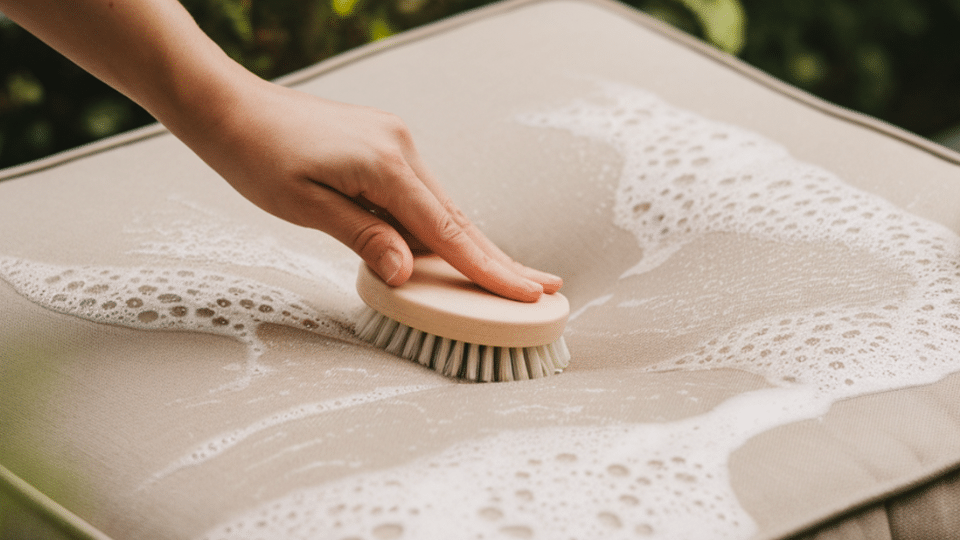
Use circular motions with your soft brush to work on stained areas. Apply gentle pressure to avoid damaging the fabric while still removing stubborn mildew.
Fabric protection: Always brush in the same direction as the fabric weave when possible this prevents creating permanent texture changes or pilling in the material.
Step 5: Rinse Thoroughly
Use your garden hose to wash away all cleaning solution and loosened mildew. Remove every trace of soap to prevent dirt attraction later. Squeeze out excess water by gently pressing the cushions.
Drying strategy: Position cushions at an angle against a fence or chair to help water drain out more completely and speed up the drying process.
Video Tutorial
I would like to give credit to Hey Insights for their informative video, which served as a valuable reference for this guide.
Alternative Homemade Cleaning Solutions to Try
While the vinegar and dish soap mixture works well for most mildew problems, you may want to consider other options. Here are several effective homemade cleaning solutions that tackle mildew just as well.
1. Baking Soda Power Cleaner
How It Works: Mix the baking soda with warm water until it dissolves completely. Add dish soap and stir gently. This solution works by lifting stains and naturally neutralizing odors. Baking soda is mildly abrasive, which helps scrub away stubborn mildew without scratching the fabric.
Best For: Heavy mildew buildup and odor removal. The scrubbing action helps with thick, crusty mildew that’s been sitting for months.
2. Lemon Juice Brightening Solution
How It Works: Combine lemon juice and water in a spray bottle. Add salt and shake until dissolved. The acid in lemon juice kills mildew spores while naturally bleaching stains. Salt adds gentle scrubbing power without damaging fabric fibers.
Best For: Light-colored cushions and fresh mildew stains. Lemon juice works faster on newer stains that haven’t set deeply into the fabric.
3. Hydrogen Peroxide Stain Fighter
How It Works: Mix hydrogen peroxide with water and add dish soap. This solution breaks down mildew at the molecular level while lifting stains from fabric. Hydrogen peroxide releases oxygen, which effectively kills mildew spores.
Best For: Dark, set-in stains and white or light-colored cushions. Works well on mildew that has turned black or green over time.
Wrapping It Up
Cleaning mildew from outdoor cushions doesn’t require harsh chemicals that damage fabric and harm the environment. The simple vinegar solution method works just as effectively as bleach while preserving your cushions for years to come.
These natural cleaning techniques save money, protect your family’s health, and keep outdoor furniture looking fresh throughout every season.
Regular maintenance with these safe ingredients prevents heavy mildew buildup that requires stronger treatments. Your cushions will last longer, look better, and you’ll avoid costly replacements caused by chemical damage.
Ready to tackle other outdoor cleaning challenges?
Try these exact natural solutions on patio umbrellas, outdoor rugs, and furniture covers. Share your cleaning results in the comments below: Which method worked best for your cushions?


